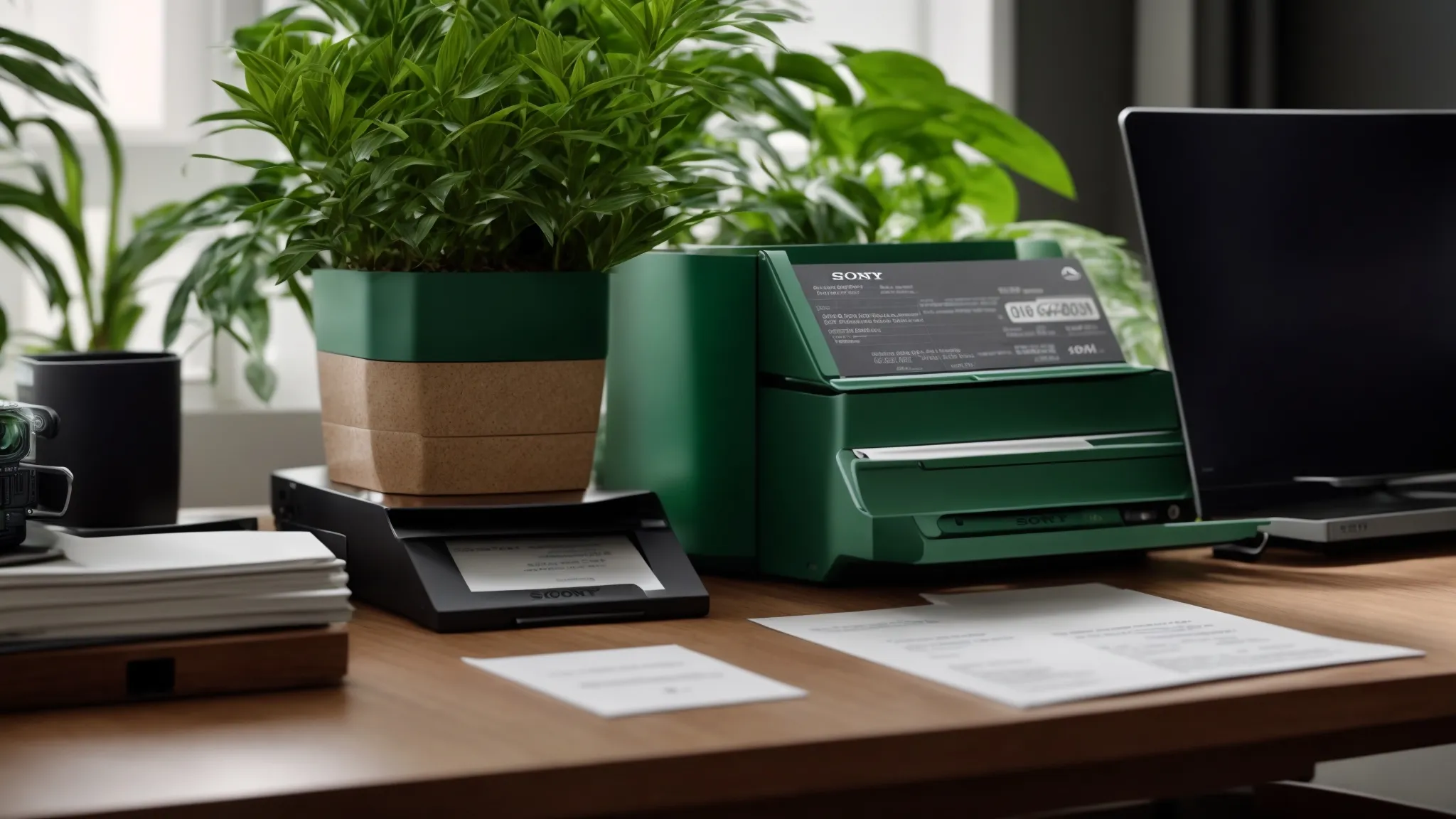Cheque security is a critical concern for many businesses, especially in a world where identity theft and cheque fraud are on the rise. This article covers essential security features of cheques, effective techniques to prevent theft, and technologies enhancing cheque security. By understanding these measures, readers will learn how to protect their finances, reduce the risk of fraud, and maintain compliance with the payment card industry data security standard. This knowledge not only helps in safeguarding their assets but also minimizes potential downtime related to cheque-related issues.
Understanding Cheque Security Measures

Cheque security is vital for safeguarding financial transactions, as it protects consumers from various threats. Common risks include cheque theft, alteration, and counterfeiting. Understanding the different types of cheque fraud is essential for effective risk management. This section will address the importance of regulations in maintaining data integrity and offer strategies to enhance cheque security for users.
Importance of Cheque Security in Financial Transactions
Cheque security plays a critical role in safeguarding bank accounts from potential fraud and unauthorized access. Implementing strong authentication measures helps ensure that only authorized users can initiate transactions, thus protecting sensitive financial information. In an age where data loss can have significant financial repercussions, these measures become essential for maintaining information security across the board.
Moreover, employing advanced cheque security features not only enhances the safety of transactions but also provides added convenience for users. By understanding and utilizing these security measures, businesses can mitigate risks associated with cheque fraud, leading to smoother financial processes and increased trust in their banking methods. This tailored approach to security allows organizations to focus on their core activities while knowing their financial interests are protected.
Common Threats to Cheque Security
Cheque fraud remains a significant concern for businesses, encompassing various tactics such as cheque forgery and alterations. In instances where sensitive data isn’t adequately protected, criminals can exploit vulnerabilities, leading to unauthorized withdrawals and financial losses. Implementing a robust policy focused on data security is essential to minimize these risks, ensuring that every cheque transaction operates within secure guidelines.
The rise of digital banking has introduced additional challenges, especially with the use of mobile devices for transaction approvals. Without effective mobile device management, employees may inadvertently expose sensitive cheque information to potential fraudsters. Businesses must prioritize encryption and authentication strategies to protect cheque information while leveraging the ACH network for secure transactions. By understanding these common threats, businesses can take proactive steps to safeguard their financial interests.
Overview of Cheque Fraud Types
Cheque fraud can take many forms, with counterfeit cheques being one of the most prevalent threats businesses face today. Fraudsters often create fake cheques that mimic legitimate ones, using advanced printing techniques to evade detection. To combat this threat, businesses must adhere to the law and utilize security features such as watermarks and unique serial numbers on every cheque, making it harder for counterfeit cheques to circulate.
Another significant form of cheque fraud involves alterations, where criminals modify the data on a legitimate cheque to divert funds. This highlights the importance of encryption and other protective measures to secure cheque data during transactions. By implementing strong security protocols and staying informed about various types of cheque fraud, businesses can better safeguard their financial assets and enhance trust in their banking practices.
Cheques hold secrets in their design. Next, we will uncover the essential security features that keep money safe and trust intact.
Essential Security Features of Cheques

Cheque security features are critical for protecting against fraudulent activities. Key elements such as watermarks and background patterns serve to deter copying and enhance visual security. Additionally, chemical-responsive paper, microprinting, and fine print features add layers of protection, while colour-shifting inks help to reduce vulnerabilities. Understanding these advanced features aids businesses in combatting risks, including those arising from social engineering threats and enhancing overall cheque safety.
Watermarks and Background Patterns
Watermarks and background patterns are essential elements in cheque design that significantly enhance physical security and help protect against fraudulent activities. These features serve as visual indicators of authenticity, making it difficult for counterfeiters to replicate genuine cheques. By incorporating unique watermarks and intricate patterns, businesses can establish clearer ownership and provide evidence of valid transactions, reducing the risk of unauthorized access to funds.
Implementing effective watermarks and background patterns showcases a commitment to safeguarding financial assets. Businesses should prioritize advanced customization in their cheque designs to align with their security measures. This proactive approach not only strengthens access control but also fosters trust among clients and partners, ensuring ongoing protection against potential threats in the financial landscape.
Chemical-Responsive Paper
Chemical-responsive paper is an advanced security feature that enhances the protection of cheques against fraud. This type of paper reacts to specific chemicals, such as those found in common solvents, which can be used to erase or modify cheque details. By incorporating chemical-responsive paper, businesses can better safeguard their financial information, making it more difficult for criminals to alter cheque data without detection, while ensuring compliance with regulations such as the General Data Protection Regulation (GDPR).
For companies relying on automated clearing house (ACH) transactions, using chemical-responsive paper adds another layer of security to protect contracts and financial agreements. Organizations can benefit from the knowledge of how this feature contributes to fraud prevention, acting as a deterrent against unauthorized alterations. Integrating such technology into cheque designs ensures that every financial document meets high security standards, ultimately reinforcing trust in the integrity of one’s banking practices.
Microprinting and Fine Print Features
Microprinting and fine print features are essential elements in cheque security that help combat check fraud effectively. These microscopic texts, often found on cheque borders or in logos, serve as a deterrent against counterfeit attempts. When scammers try to replicate cheques, their inability to accurately reproduce these detailed features significantly reduces the chances of successful crime, fostering secure communication between business entities.
Furthermore, incorporating microprinting enhances data protection by ensuring that alterations are easily detectable. Security information and event management systems can leverage reports on cheque changes, helping businesses track unusual activities swiftly. By understanding and implementing these features, organizations can fortify their defences against cheque fraud while building trust with stakeholders.
Colour-Shifting Inks
Colour-shifting inks are an effective security feature that enhances the integrity of cheques. When these inks are incorporated into cheque design, they provide a visual cue that changes color when viewed from different angles, making it challenging for counterfeiters to replicate genuine documents. For organizations aiming to maintain regulatory compliance, utilizing such advanced security measures strengthens their overall fraud prevention infrastructure.
By adopting colour-shifting inks, businesses can reinforce their commitment to safeguarding sensitive financial transactions. These inks not only serve as a deterrent but also act as part of a comprehensive firewall against cheque fraud. With proper integration into cheque designs, organizations can enhance the security of their financial documents, ensuring that they maintain trust among clients and protect their financial interests effectively.
The security features of cheques are vital, but they are only part of the story. Understanding how to prevent cheque fraud is the next step in safeguarding your business.
Techniques to Prevent Cheque Fraud

Implementing personal security measures, regularly monitoring bank statements, using secure mail services, and shredding old cheques are vital techniques for preventing cheque fraud. These practices help safeguard consumer privacy and contribute to maintaining financial wealth. By utilizing mobile apps for secure banking, users can further enhance their protection against fraud while performing their regular audits seamlessly.
Implementing Personal Security Measures
Implementing robust personal security measures is essential for safeguarding against cheque fraud. Users should remain vigilant against phishing attacks, where fraudsters attempt to extract sensitive information through deceptive emails or messages. Training employees on how to recognize such threats and utilizing security measures like two-factor authentication can greatly reduce the risk of unauthorized access to financial accounts.
Furthermore, businesses must emphasize the importance of securing mobile devices, which often contain sensitive cheque information. Regularly updating software and using security apps can protect against vulnerabilities that cybercriminals may exploit. By making these proactive security measures a priority, organizations can significantly enhance their defense against cheque fraud and maintain the integrity of their financial transactions.
Regularly Monitoring Bank Statements
Regularly monitoring bank statements is a crucial technique for preventing cheque fraud. By reviewing transactions consistently, business owners can quickly identify any unauthorized charges or discrepancies. This proactive approach enables them to address potential issues before they escalate, ensuring the security of their financial accounts and overall trust in their banking methods.
An effective strategy involves reconciling bank statements with internal records to ensure accuracy. If any irregularities are noticed, immediate reporting to the bank can help minimize financial loss. Understanding this practice not only enhances cheque security but also fosters responsible financial management, empowering businesses to maintain control over their transactions.
Using Secure Mail Services
Using secure mail services is a critical step in preventing cheque fraud for businesses. By choosing trusted mail carriers that offer tracking and guaranteed delivery, companies can ensure that their sensitive financial documents reach intended recipients safely. This method minimizes the risk of cheques being intercepted or altered during transit, which is a common tactic used by fraudsters.
Moreover, businesses should consider implementing additional layers of protection, such as requiring signatures upon receipt of cheque deliveries. This process not only adds to the security of the transaction but also provides a solid audit trail. Companies that prioritize secure mail services demonstrate a commitment to safeguarding financial interests, significantly reducing the chances of cheque fraud and enhancing overall trust in their financial operations.
Shredding Old Cheques
Shredding old cheques is a fundamental practice for preventing cheque fraud and protecting sensitive financial information. Once a cheque is no longer needed, it is essential for businesses to ensure that it is thoroughly destroyed. This step minimizes the risk of unauthorized access to financial data that could otherwise be exploited by fraudsters.
Implementing a systematic approach to shredding old cheques can strengthen an organization’s overall security efforts. Businesses should establish clear protocols for managing and disposing of cheques, including regular shredding schedules. By actively engaging in this practice, they not only safeguard their financial transactions but also foster a culture of security awareness among employees.
Even with strong techniques to prevent fraud, the battle is ongoing. New technologies are emerging, sharpening cheque security and guarding against threats.
Technologies Enhancing Cheque Security

Digital signature technology, electronic cheque imaging, and anti-counterfeit software are key innovations enhancing cheque security. Digital signatures provide verification of authenticity, while electronic cheque imaging facilitates secure processing. Anti-counterfeit software detects fraudulent attempts by analyzing cheque features. Each of these technologies plays a vital role in protecting businesses from cheque fraud and ensuring secure financial transactions.
Digital Signature Technology
Digital signature technology is a crucial advance in cheque security, providing a reliable way to verify the authenticity of financial documents. This technology utilizes cryptographic algorithms to create a unique signature for each cheque, ensuring that any alterations can be detected immediately. By adopting digital signatures, businesses can significantly reduce the risk of fraud and enhance confidence in their banking transactions.
Furthermore, integrating digital signature technology streamlines the cheque processing workflow. This not only expedites approvals but also provides a secure method to store and manage signed documents electronically. As businesses increasingly seek efficient and secure banking solutions, digital signatures stand out as a vital tool for protecting financial interests against fraud while simplifying the transaction process.
Electronic Cheque Imaging
Electronic cheque imaging is a transformative technology that enhances cheque security by digitizing the cheque deposit process. This system allows businesses to securely capture images of cheques and transmit them electronically to their banks for processing. By eliminating the need to physically handle cheques, organizations can reduce the risk of cheque loss or theft, thereby improving overall security in financial transactions.
In addition to strengthening security, electronic cheque imaging streamlines the cheque processing workflow, making it more efficient for businesses. It enables quicker access to funds while providing the ability to track cheque deposits in real-time. Companies looking to optimize their banking operations and minimize fraud exposure should consider integrating electronic cheque imaging into their processes, as it not only protects sensitive financial information but also enhances operational efficiency.
Anti-Counterfeit Software
Anti-counterfeit software serves as a critical tool for businesses looking to secure their cheque transactions. This technology works by analyzing various features on cheques, such as watermarks, microprinting, and colour-shifting inks, to detect any discrepancies or alterations. By implementing such software, organizations can significantly reduce the risk of falling victim to cheque fraud, ensuring that only legitimate transactions are processed.
With ongoing advancements in technology, anti-counterfeit software has become more sophisticated and user-friendly. For instance, some solutions offer real-time alerts when suspicious activities are detected, allowing businesses to act quickly before any financial loss occurs. By adopting this proactive approach, companies not only protect their financial assets but also reinforce trust with their clients, showcasing a commitment to maintaining secure financial operations.
As businesses adopt new technologies, they must also keep their practices aligned with regulations. Understanding compliance not only helps protect against fraud but ensures smooth operations in an ever-changing landscape.
Compliance and Best Practices for Businesses

Understanding banking regulations is crucial for businesses to maintain compliance and safeguard their finances. Employee training on cheque security enhances awareness of potential threats while ensuring that staff are equipped to recognize and respond to fraud attempts. Regular security audits help identify vulnerabilities and strengthen overall cheque security protocols, contributing to a resilient financial environment.
Understanding Banking Regulations
Understanding banking regulations is essential for businesses to maintain compliance and ensure cheque security. These regulations guide organizations in implementing best practices for preventing fraud and protecting sensitive financial information. Companies must be aware of the laws governing cheque issuance, processing, and storage, as non-compliance can lead to severe penalties and undermine trust from clients and partners.
Moreover, adhering to banking regulations fosters a culture of security awareness within the organization. Training employees on regulatory requirements and the implications of cheque fraud equips them to recognize suspicious activities. This proactive stance not only safeguards financial assets but also enhances a company’s reputation as a trustworthy entity within the banking sector.
Employee Training on Cheque Security
Employee training on cheque security is essential for protecting businesses against fraud. By educating staff on potential risks such as cheque forgery and alteration, companies empower their employees to recognize and respond to suspicious activities effectively. Regular training sessions can incorporate practical scenarios and case studies, helping staff understand the impact of cheque security on the organization’s financial integrity.
Furthermore, having a knowledgeable workforce contributes to a culture of vigilance within the organization. Businesses can establish clear protocols for reporting unusual transaction activity and encourage open communication among employees regarding cheque security concerns. This proactive approach not only enhances overall compliance with security measures but also strengthens trust in the organization’s financial practices, thereby safeguarding its assets.
Regular Security Audits
Regular security audits are essential for businesses looking to enhance cheque security and ensure compliance with banking regulations. By conducting these audits, companies can identify vulnerabilities in their processes, assess the effectiveness of their security measures, and make informed decisions to improve their financial protocols. Consistently reviewing and updating security practices helps foster a culture of awareness among employees, ensuring everyone is equipped to respond to potential threats effectively.
For instance, scheduling semi-annual audits allows businesses to stay ahead of emerging risks associated with cheque fraud. During these evaluations, organizations can scrutinize transaction records, review access controls, and confirm the implementation of advanced security features on their cheques. This proactive approach not only safeguards financial assets but also reinforces clients’ trust, demonstrating a commitment to maintaining high standards in cheque security.
Successful compliance sets the stage for stronger cheque protection. Next, discover the tools and resources that can help enhance cheque security for your business.
Resources and Tools to Enhance Cheque Security

Implementing effective cheque security measures involves utilizing recommended security software, adhering to secure cheque printing guidelines, and partnering with trusted financial institutions and services. Each of these areas provides essential strategies for enhancing cheque security. The following sections will detail specific software solutions, best practices for printing checks securely, and insights on selecting reliable financial partners to safeguard business transactions.
Recommended Security Software
Implementing the right security software is essential for enhancing cheque security. Solutions such as anti-fraud monitoring systems can detect suspicious activities in real-time, helping businesses react promptly to potential threats. Software that offers secure cheque imaging is also beneficial, allowing companies to digitize cheque deposits while reducing the risk of loss or theft during physical handling.
Additionally, using encryption software can protect sensitive financial transactions by ensuring that data exchanged during the cheque clearing process remains secure. Organizations can benefit from these technologies by fostering a safer financial environment, minimizing the risk of fraud, and maintaining confidence in their banking operations. By carefully selecting and utilizing effective security software, businesses can significantly bolster their cheque security measures.
Guidelines for Secure Cheque Printing
When implementing secure cheque printing, businesses must prioritize the use of high-quality cheque stock that incorporates advanced security features. Utilizing watermarks, microprinting, and colour-shifting inks can deter counterfeiting and ensure the integrity of each cheque issued. For example, a business could choose to print cheques with unique serial numbers, making it difficult for fraudsters to replicate or alter them without detection.
Furthermore, organizations should adopt secure printing environments to safeguard their cheque production process. By limiting access to printers and ensuring that only authorized personnel handle cheque printing tasks, businesses minimize the risk of internal threats. Investing in secure printing technologies and conducting regular audits of the cheque printing process will enhance overall cheque security, allowing companies to focus on their core functions with greater peace of mind.
Trusted Financial Institutions and Services
Choosing trusted financial institutions is essential for enhancing cheque security. Reputable banks and credit unions prioritize advanced fraud detection methods and provide tools that help businesses monitor their accounts for unauthorized activity. For instance, utilizing institutions that offer secure online banking and alerts for unusual transactions can significantly mitigate risks associated with cheque usage.
Partnering with reliable financial services not only bolsters cheque safety but also fosters a sense of confidence in financial transactions. Establishing relationships with institutions experienced in cheque fraud prevention ensures that businesses stay updated on best practices and regulatory changes. This collaboration can greatly enhance a company’s overall security posture, protecting their financial interests and contributing to a secure banking experience.

